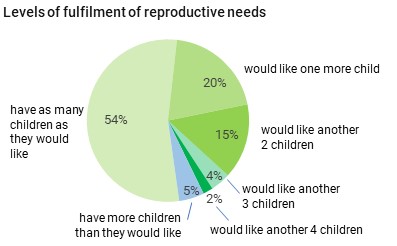27/2022
2022-10-04
The Reproductive Needs of Poles
The recent survey about the reproductive plans of Polish people shows that 21% of the youngest respondents (18–24 years old) do not want children at all. If they understood the question correctly this means that over a fifth of young people are not planning to have offspring. Overall, unwillingness to have children is unrelated to sex, with 7% of both women and men saying this. Other groups who are less likely to plan offspring are those not practising any religion (17%), identifying politically with the left (16%) or earning at least 4,000 zloty per household member (14%).
In addition, only 54% of people say their reproductive needs have been met. Of the remainder, most have fewer children than they would like and only 5% say they have too many.

|
More on this subject in the CBOS report.
This ‘Current Events and Problems’ survey (387) was conducted using a mixed-mode procedure on a representative sample of named adult residents of Poland, randomly selected from the National Identity Number (PESEL) register. Respondents independently selected one of the following methods: Computer Assisted Personal Interview (CAPI); Computer Assisted Telephone Interview (CATI), respondents receiving researchers’ telephone numbers in an introductory letter from CBOS; Computer Assisted Web Interview (CAWI), where respondents filled in the online questionnaire independently, gaining access by means of a login and password provided in an introductory letter from CBOS. In all three cases the questionnaire had the same structure and comprised the same questions. The survey was carried out between 27 June and 7 July 2022 inclusive on a sample of 1084 people (62.1% using the CAPI method, 23.4% CATI and 14.5% CAWI). CBOS has been conducting statutory research using the above procedure since May 2020, stating in each case the percentage of personal, telephone and internet interviews.





